350 Search Results for aided language input
June 2, 2014
by Carole Zangari -
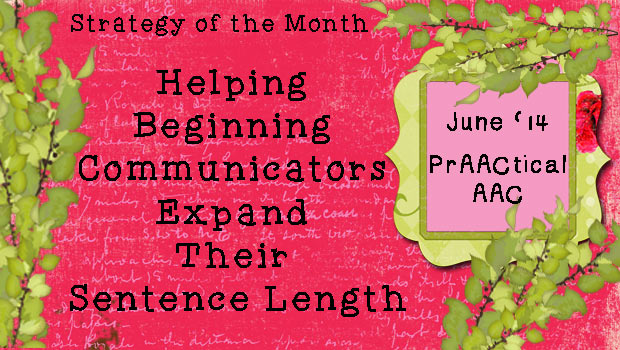
Nothing makes an AAC SLP happier than seeing beginning communicators start to use symbols to express themselves. Sure, it is great when a learner grabs your arm to lead you to the snack cupboard or hands you a juice box to get help opening it. Those are important communicative acts that we celebrate. But moving beyond pre-symbolic forms of communication to using signs and pictures, allows us to expand their vocabularies outside of the ‘here and now’ and enables them to communicate effectively with less familiar partners. When we’ve crossed the bridge into symbolic communication, we’re building a foundation for language development. If things go well, the learner will steadily acquire new symbols and words, eventually allowing us to work on word combinations. Are you working with AAC learners who at the early sentence level? If so, you may be considering how to build the length and complexity of their... [Read More...]
May 30, 2014
by Robin Parker -
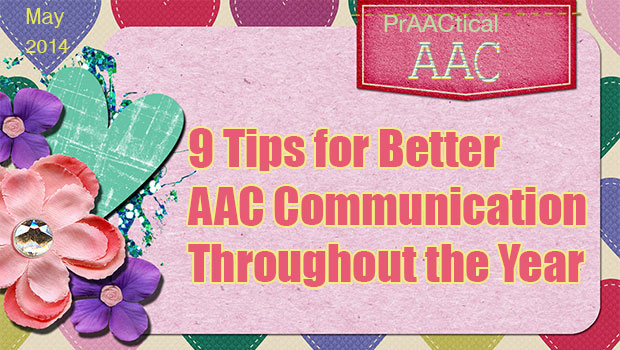
Although Better Hearing and Speech Month is ending, we want to continue best prAACtices in all teaching interactions throughout the year. Here are 9 AAC facilitator tips to help with this goal. Provide Aided Language Input (ALI)– ALI is modeling AAC style. Speak AAC to the AAC user. Use Scaffolding– Scaffolding is a verbal and visual strategy that has the facilitator build upon prior knowledge of the learner in order for the learner to integrate a new concept or skill. Model words and concepts to add information onto what the AAC user already knows and uses. Provide Expansions and Extensions– A form of modeling. Add a word to the spontaneous communication from the learner. The facilitator models a conceptual or grammatical word in the form of a model. Use Recasting– Recasts serve to add or correct information without obstructing the natural flow of communication. Recasting is another form of modelling. The... [Read More...]
May 25, 2014
by Carole Zangari -
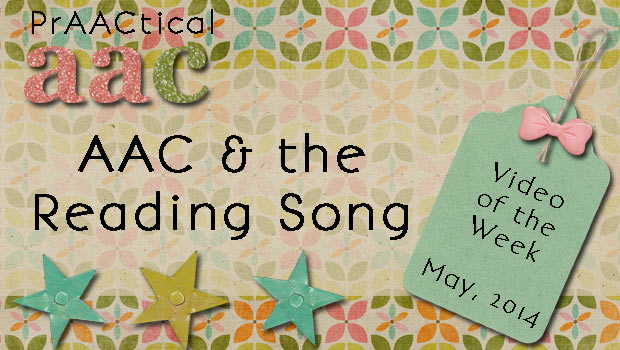
We love seeing AAC in action, but add in core word practice and a little aided language input, and we’re over the moon. Enjoy this video by the Dreamweavers. Direct link to video: http://www.youtube.com/watch?v=wArNlLoMx-Q&feature=share&list=PLwJSl0zl5AzIr90O45w06x9M-BudYahpi&index=5
May 19, 2014
by Carole Zangari -
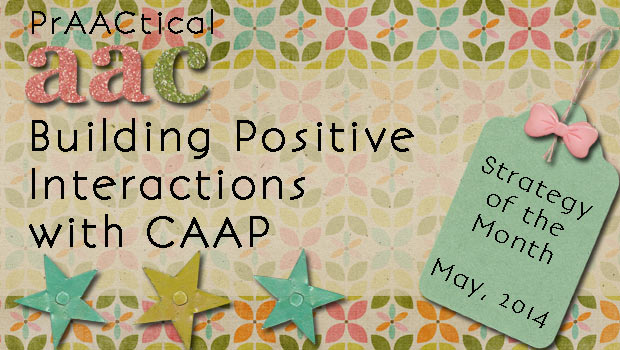
One of the challenges in helping AAC learners maximize their communicative potential is that they often interact with people who do not facilitate positive interactions. We know, for example, that partners may focus on the SGD rather than the topic or communicator (e.g., “Can you find ‘go?’, “Press it again”). They may dominate the conversation by taking more than their fair share of turns, making for a lop-sided and uninteresting context that is more of a monologue than a true conversation. They also tend to interrupt the AAC learner, often in an attempt to guess the learner’s message, save time, or correct the person. These actions come from a good place (wanting to support the learner) but are not things that facilitate improved communication. In a previous post, we talked about the RAAP strategy, for building partner skills during storybook reading. In this post, we continue to share the work of... [Read More...]
April 15, 2014
by Carole Zangari -
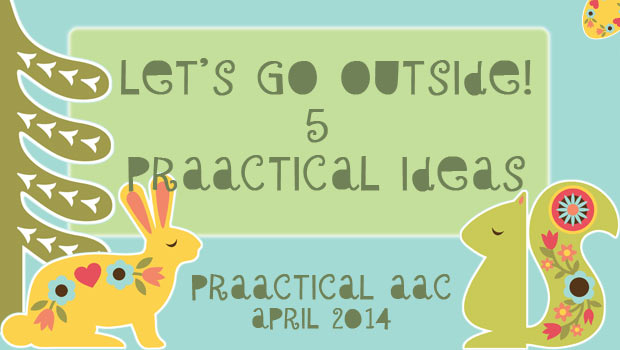
It’s spring where we live and that means that many of our prAACtical friends are itching to get outdoors. Whether we’re going for a walk, checking out a park, and lingering on the playground there are plenty of activities that provide a good excuse for some AAC practice that’s functional and fun. Here are a few ideas for things to model (using aided language input, if you’re with a beginning communicators) and elicit. Keep in mind that some AAC learners will benefit from additional support to help them generalize skills used well in therapy rooms and classrooms to the great outdoors. Where should we go? Making choices and giving directions for specific locations using core and fringe words (e.g., go there, on swings, under tree) How should we move? Good opportunity to to practice verbs and descriptors (e.g., go, jump, walk, fast, slow, big, little). Practice or introduce higher level... [Read More...]
March 27, 2014
by Carole Zangari -
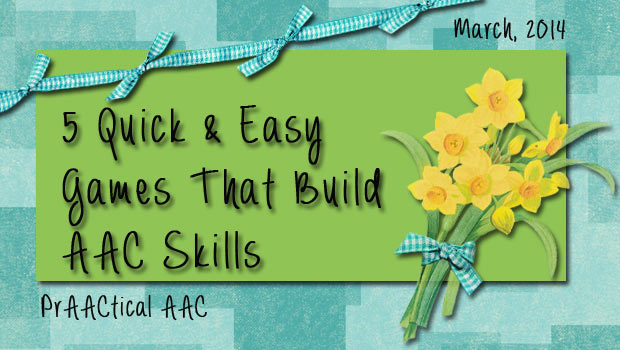
Have a few minutes and want to get in some core word prAACtice without making it seem like work? Giving the AAC learner a chance to boss us around and direct us do things just because they tell us to is something that has worked for us more times that we can count. Put the AAC learner in control and make it fun. Get your silly on and ham it up but remember to use aided language input throughout the process. Here are some ideas. They say: “Go,” “Sit,” “Tell,” or “Walk.” We act that out in the craziest way possible. They say: “Happy,” “You happy,” “Sad,” or “You sad.” We make the most ridiculous happy/sad faces imaginable. They say: “What,” “What is it?” or “What is that?” We use the context to figure out what they’re referring to and say “It is a ___.” They say: “Get the ____,”... [Read More...]
March 17, 2014
by Carole Zangari -
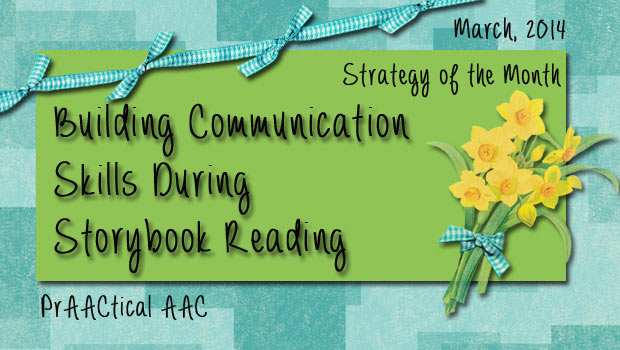
In this post, we continue to explore strategies for advancing the literacy experiences of people who use AAC. Today, we’ll look at a strategy used in the research of Drs. Cathy Binger and Jennifer Kent-Walsh. What is a little different about this strategy is that it uses literacy experiences, specifically storybook reading, to build communication skills. One component of their research focuses on an interactive reading strategy called RAAP: Read, Ask, Answer, Prompt. There is lots to love about this approach, but one of our favorite things is that is makes heavy use of aided language input, an intervention strategy that is critical for partners of beginning communicators to use. You can read more about aided language input and see videos here. It also gets partners using language expansions and extensions, an intervention strategy that is effective for communicators at many levels of proficiency. Finally, we appreciate the frequent use of... [Read More...]
March 15, 2014
by Carole Zangari -
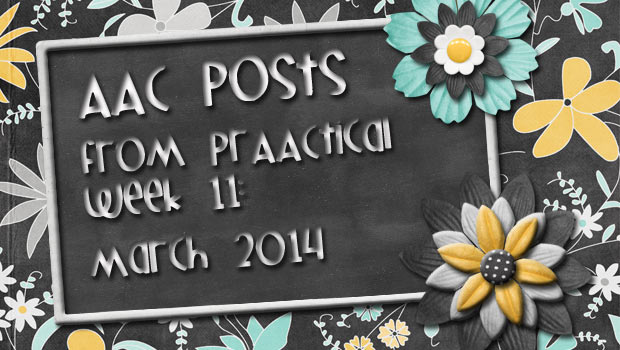
We’re still adjusting to Daylight Savings Time (morning comes too soon!) but managed to rub the sleep from our eyes and have a prAACtical week. Hope you did, too! Sunday: Video of the Week – An ABA Perspective on AAC for Students with Autism Monday: Strategy of the Month – More Robust Literacy Instruction for People who Use AAC Tuesday: Research Tuesday – Literacy Instruction for People with Significant Disabilities Wednesday: Watch It Wednesday – Learn More About iOS 7 with Spectronics Thursday: Try This – A PrAACtical Idea for Aided Language Input Friday: Before We Read – Using Predictions for PrAACtical Learning
March 14, 2014
by Carole Zangari -
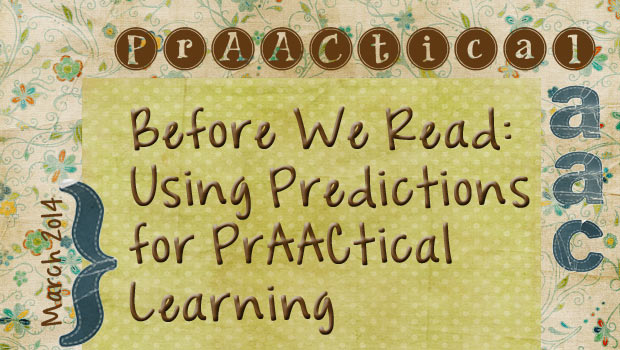
This month, we’re focusing on literacy learning for our Monday posts on Strategy of the Month. In honor of that topic, here’s a quick tip for adding a bit of interaction to book reading. This tip works for books you’ve never read before, or perhaps haven’t read in a really long time. Take a few minutes before the reading begins to predict what the book will be about. We’ll get to the ‘How To’ part in a minute, but first, here’s why we think this is a prAACtical idea. It gets AAC learners thinking about something more than requesting, and we know you are just as passionate about that as we are. It helps the AAC learner activate their background knowledge, something that (we’ve noticed) many of them don’t do automatically. That doesn’t mean that they aren’t capable of it, of course, but it does mean they need practice and... [Read More...]
February 1, 2014
by Carole Zangari -
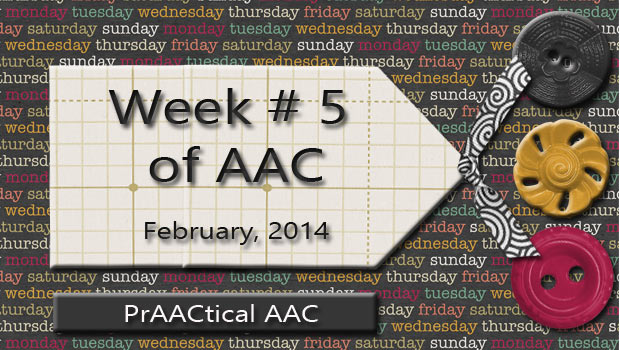
What fun seeing so many prAACtical friends at ATIA in Orlando this week! Here are some of the posts you may have missed. Sunday: Video of the Week – AAC Strategy for Scanning by AAC Chicks Monday: Using Aided Language Input to Build Communication Opportunities Tuesday: A Totally Different Life Wednesday: Watch It Wednesday-I Hear Them All Thursday: SPEAKAll! A PrAACtical Research-to-Practice Project Friday: What Went Well – A Look Back at January, 2014









